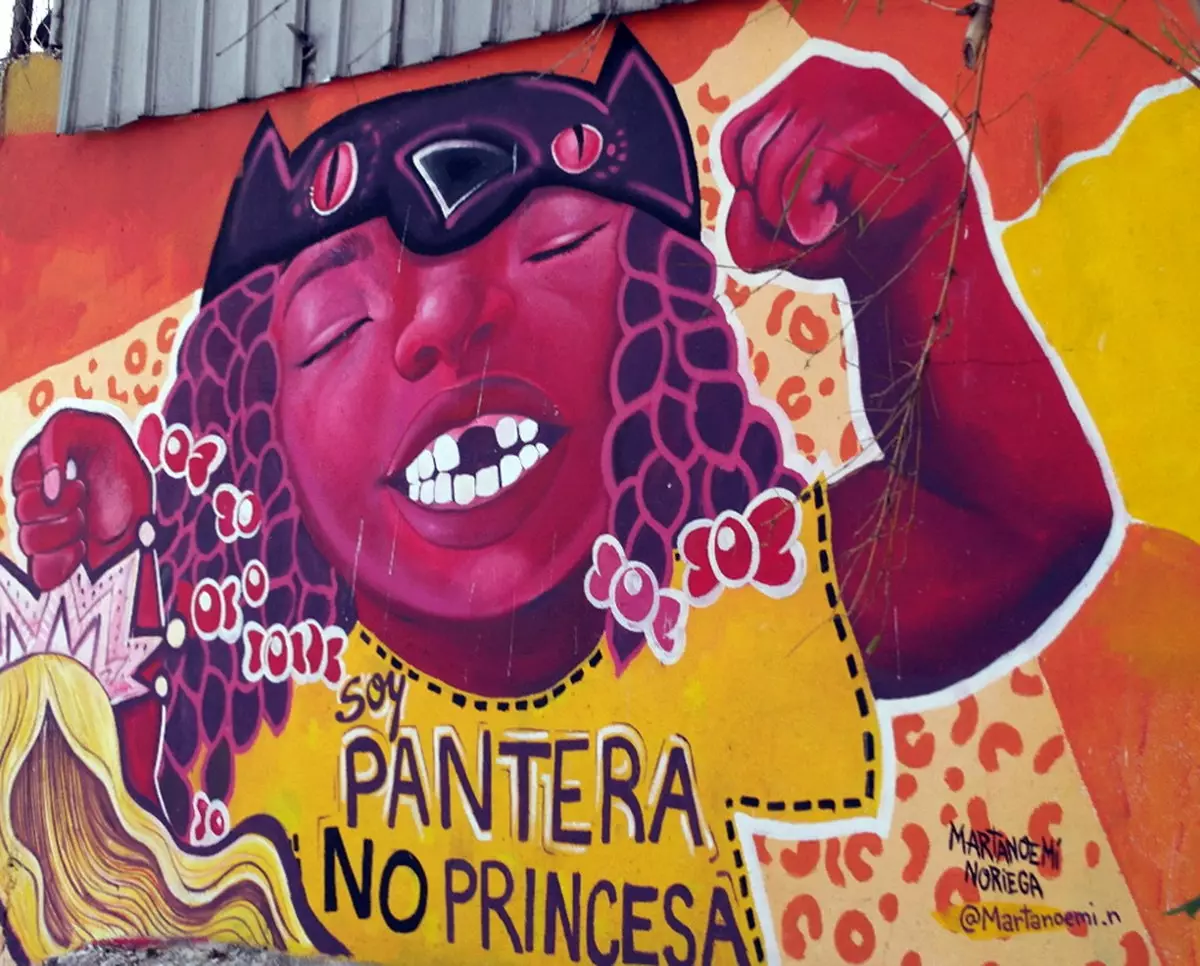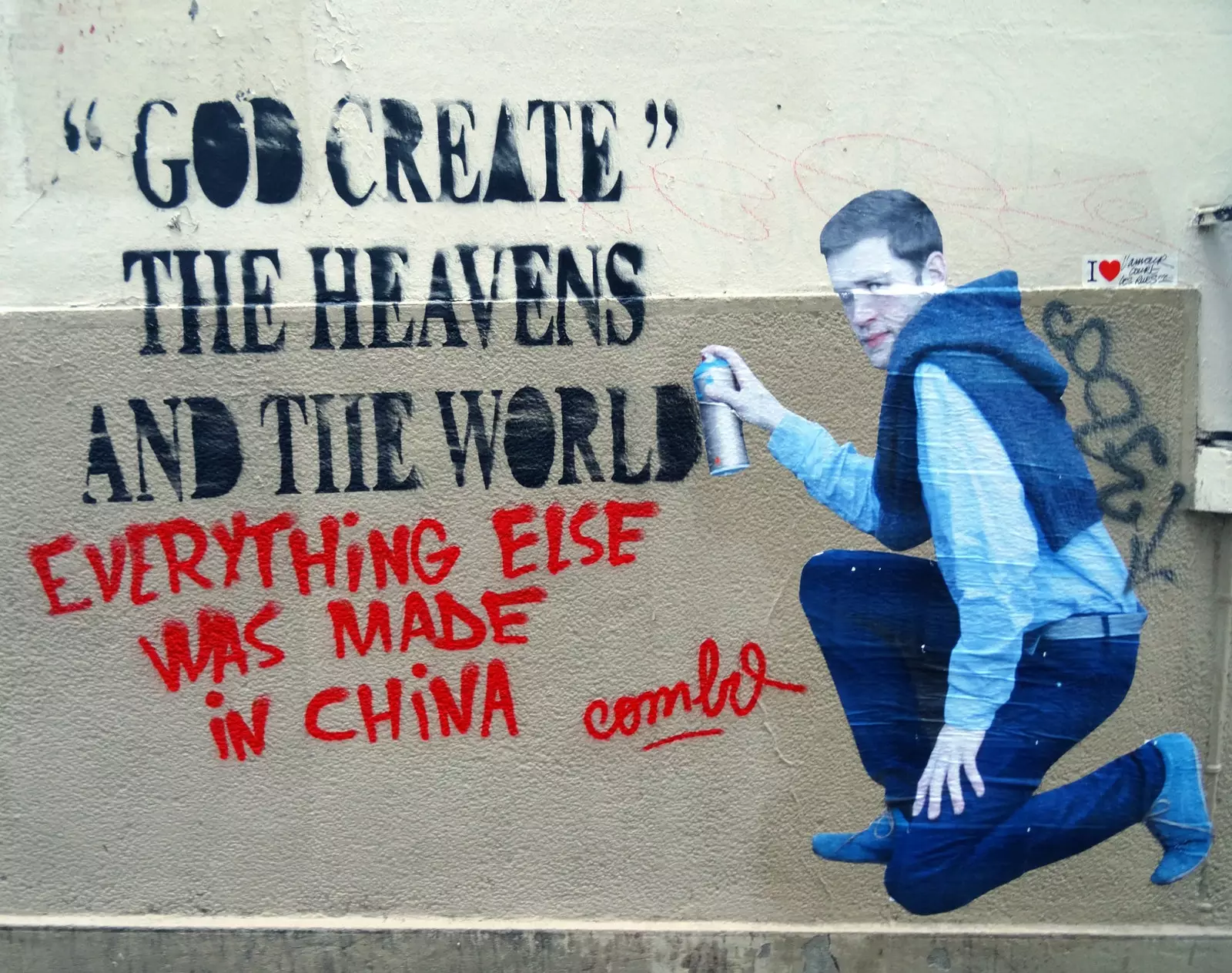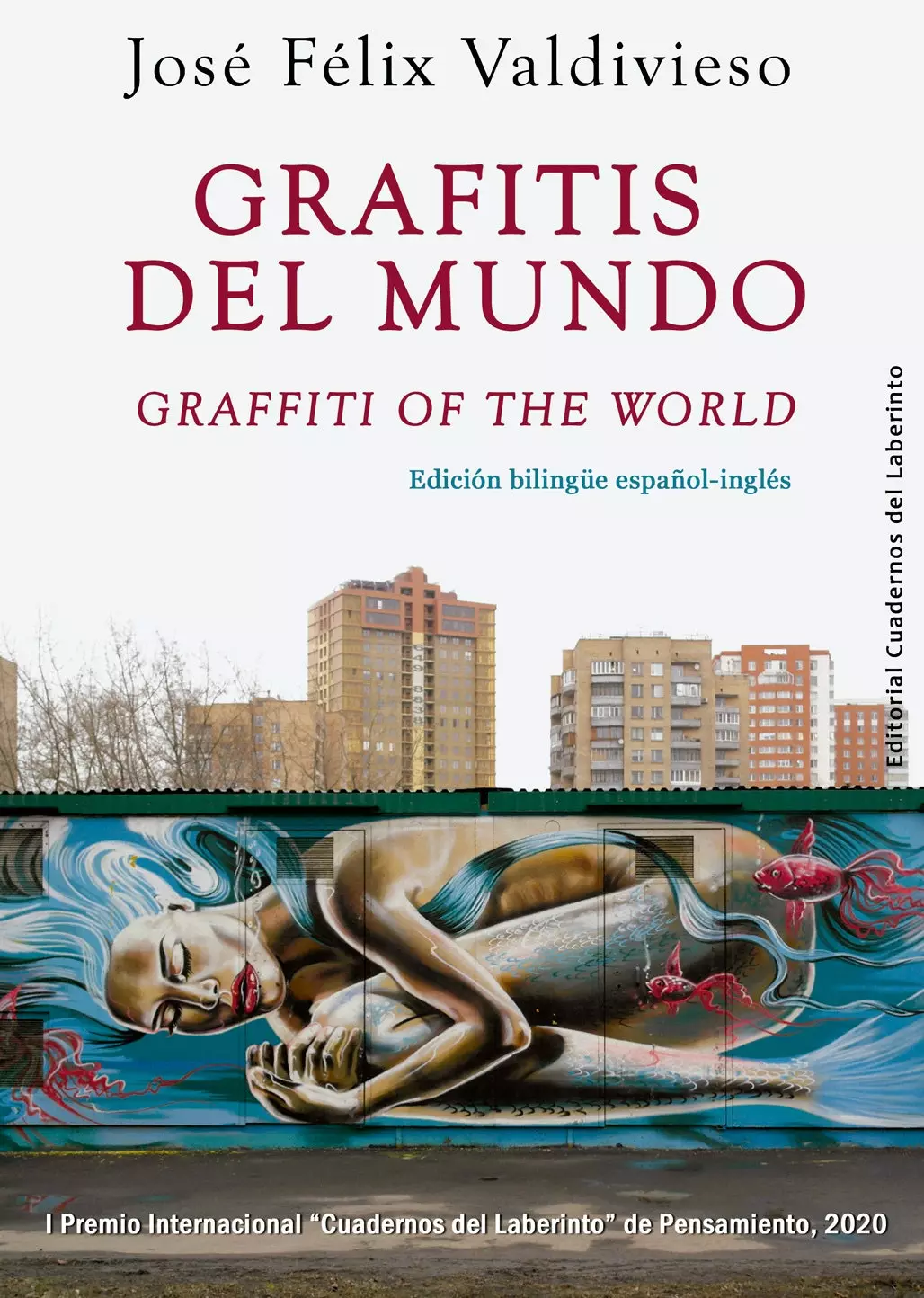
'I don't want to be a princess, I want to be a panther', by Martanoemí Noriega
The graffiti they have been the subject of dispute since they began to fill the walls of cities. There are those who staunchly defend them and those who hate them unceremoniously. The professor and writer José Félix Valdivieso he is in the first group, since for him they are authentic art. And proof of this is his book Graffiti of the world, where he collects a total of 50 works from all over the planet that have inspired him.
According to him, this dispute over defining forms of expression as art or not has been going on throughout history. “Formal paintings have also happened in the past. If the painter touched on a subject that was sacrilegious, that went against the canons, many times they were not considered art. Or a movement was created that rose up against him,” he maintains. And he gives erotic art as an example: “In the past, this type of art was not accepted by the general public. A censorship that shows that the ways of being illegal have evolved over time”, synthesize.

'Made in God'
What he is clear about is that for him they are art, since in the end They are another form of expression. And it was for this reason that at the end of 2014 he devised this book, in which includes graffiti ranging from a simple phrase to a very elaborate mural. Any representation that provoked him. “At that time he was traveling a lot and I got the idea of every time I saw one that attracted me, write about it”.
Write about those graffiti that inspired something, whether it was a short story or a story related to what the work hides. Thus, through its pages paintings are intertwined with texts that narrate situations experienced by Félix himself or curiosities related to graffiti, such as that of Churchill and the platypus. “The story I tell in the book about it is very curious. I did not know that this British leader liked animals so much. And it is that, in the middle of World War II, Churchill only sent reinforcements to Australia, which was being bombed by the Japanese at the time, when a platypus was sent to him. An animal that ends up arriving dead at the sound of the bombs, ”he summarizes.

'Nevermore 1933'
GRAFFITI, AN AFFIRMATION OF THE SELF
According to José Félix Valdivieso, one of the best explanations of why graffiti began to become popular during the second half of the last century was given by the philosopher Jean Baudrillard. “In the context of the 70s, in societies in full development where the urban left the human being alone, the graffiti functioned as an affirmation of the personality, of the self”, he holds. That is why the messages they transmit are so important.
Hence, according to the author, they function as the prelude to social networks. The artists translate the same message throughout the city or fix it on trains so that they move through it. “People want you to know how they feel, just like social media. A howl with which to claim existence. We are many and we get lost in the mass”, he points.
But apart from this reaffirmation of the self, graffiti carries another series of characteristics. Such as the transience. José Félix Valdivieso describes it through the term of Japanese philosophy monkey unaware , which he maintains that the expiration of things is what makes them beautiful. “The Japanese always have a very fine reflection on the cultural and the aesthetic. With this expression they come to say that if everything were eternal it would not have that fragility nor would it worry us so much because we could always see it”, he synthesizes it.
An expression that links directly with the Japanese term wabi sabi , which means that beauty is found in the imperfection of objects. A few words that value the search for the unique. “In graffiti you have a lot of that too. Artists work under pressure and can't retouch them." says the expert.

'snowden'
WORKS OF ART, BUT ALSO PHRASES OR WORDS
In the graffiti chosen by José Félix Valdivieso, one of the surprises one gets is that many of them are not large or elaborate paintings, but phrases or words that because of the place where they are found caught the attention of the writer. "I was looking for why the hell do they do that not that they were great works. I am struck by the type of message they paint, ”he explains.
Thus, it is not strange that one is confronted in the book with the phrase 'The crazy ones'. “I found it in Amsterdam, where graffiti is prohibited, and above all in Spanish. It was a small job, but The person behind me caught my attention. Why had he put that? He also connected with me because my grandfather, when he went out into the street, always said that the crazy people were already there, that for him it was the noise”.
Another phrase that had a great impact on him was** 'Nie wieder 1933' (Never Again 1933)** in the center of Frankfurt . “They painted those words followed by the year Hitler came to power. Due to its connotations and the place where it is found, it is a very powerful graffiti”. Or one with the word 'Snowden' painted in the middle of Brooklyn. “You have to remember that the United States is a free country, but where certain things cannot be said. It caught my attention that his name was there, when There are still open wounds from Snowden's leak about the malpractice carried out by the country's National Security Agency."

José Félix Valdivieso, author of the book Graffiti of the world
But apart from graffiti that are powerful because of what they express, there are also others that are authentic works of art. Such as "I don't want to be a princess, I want to be a panther." In it, a girl with a panther hat is described with that phrase. “I really liked how the author of it did it. The graffiti is found on a legal wall of the City of Panama. I managed to talk to the creator of it and she told me that the idea came from a conversation she overheard between a girl and her mother”, she explains her.
And, to close the book, almost ironically, he plants a graffiti with a 'Happy 2020'. “I think it's important not to lose your humor. Only a graffiti artist would think of putting something like that on a wall,” she laughs.

Editorial Notebooks of the labyrinth
